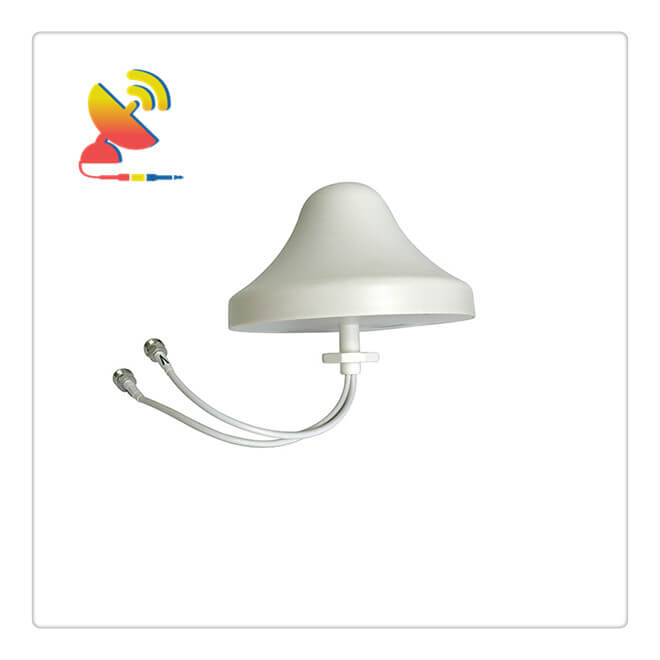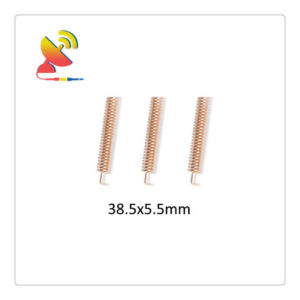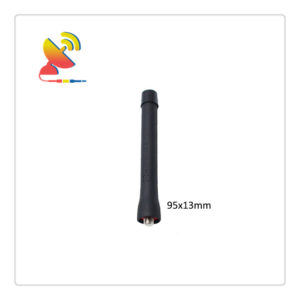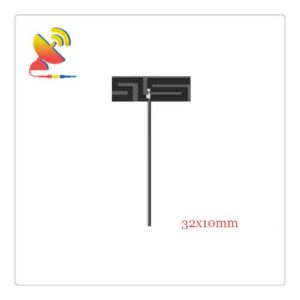Description
What is LTE MIMO Antenna Ceiling Antenna Indoor Outdoor Antenna?
The LTE MIMO Antenna CTRF-ANTENNA-MIMO-8027-200125-NK ceiling antenna is an LTE MIMO Antenna Ceiling Antenna Indoor Outdoor Antenna that comes with a 200x125mm size 806-960MHz, 1710-2690MHz frequency N-type female connector antenna for indoor-outdoor wireless communications.
C&T RF Antennas Inc provides internal & external antennas with the antenna radio frequencies such as NFC, 169MHz, 230MHz, 315MHz, 433MHz, 868MHz, 915MHz, VHF&UHF, Lora, NB-IoT, ADS-B, GSM, GNSS, Wifi 2.4GHz, 5.8GHz, Cellular 2G 3G 4G LTE, GPS, 5G NR, etc.
C&T RF Antennas Inc. provides RF antennae with Omni & Directional antenna types such as Dipole Antennas, Whip Antennas, Marine Antennas, Router Antennas, MIMO Antennas, Combo Antennas, PCB Antennas, FPC Antennas, Spring Antennas, Magnetic Antennas, Sector Antennas, Yagi Antennas, and Accessories, etc, for IoT & M2M industries.
Contact us for more details on the LTE MIMO Antenna such as LTE MIMO Antenna datasheet, LTE MIMO Antenna pricing, LTE MIMO Antenna inventory, or other LTE MIMO Antenna styles.
LTE MIMO Antenna Ceiling Antenna Indoor Outdoor Antenna Specifications
LTE MIMO Antenna Ceiling Antenna Indoor Outdoor Antenna Electrical Specifications |
|
| RF Antenna Type | Omni Fiberglass Antenna |
| Model | CTRF-ANTENNA-MIMO-8027-200125-NK |
| Frequency Range | 806-960, 1710-2690MHz |
| Gain | 2-4dBi |
| VSWR | ≤2.0 |
| Impedance | 50 Ω |
| Polarization | Vertical |
| Directional | Omni-directional |
| Connector | N-K |
| Max Power | 50W |
| Lightning Protection | DC-Ground |
LTE MIMO Antenna Ceiling Antenna Indoor Outdoor Antenna Mechanical Specifications |
|
| Dimension | 200*125mm |
| Weight | Approx. 150g |
| Radome Material | PVC |
| Operation Temperature | -20˚C ~ +60˚C |
| Storage Temperature | -40˚C ~ +80˚C |
| Color | Gray |
| Antenna Design | Dipole Array |
| Mounting | K-N Connector x2 |
| Safety Emission and other | RoHS Compliant |
| Applications | ISM/SCADA/Utilities, IoT/M2M/NB-IoT/LoRa, 2G 3G 4G LTE/LTE-IoT, GSM GPRS UMTS, etc. |
What are Multiple-input multiple-output (MIMO) antennas?
Multiple-input multiple-output (MIMO) antennas are equipped with two or more antennas in the same physical housing and are designed for IEEE 802.11n/ac Wi-Fi networks. By using multiple antennas, MIMO antennas can achieve higher throughput and transmission distance than a single antenna under the same radio transmission power.
In addition, compared with single-antenna systems, MIMO antennas can improve link reliability and reduce attenuation. Because multiple data streams are transmitted at the same time, MIMO antennas can also increase wireless capacity.
MIMO technology improves wireless performance through multipath effects (the wireless signal bounces on an object to reach the receiver at different times).
Among them, the MIMO technology decomposes a single data stream into multiple different data streams and sends them out with multiple antennas, thereby achieving redundant transmission. The MIMO antenna at the receiving end examines each data stream and selects the strongest data stream for the reception.
C&T RF Antennas Inc. provides MIMO antennas with the following operating frequencies: 2.4GHz, 2.4/5.8GHz, 3.5GHz, 4.9/5.8GHz, 5.1/5.8GHz.
Comparison of common antenna and MIMO antenna
1. Traditional single antenna system
Traditional wireless communication systems use one transmitting antenna and one receiving antenna, which is called a single-in-single-out (SISO) system. The SISO system has an unbreakable bottleneck in channel capacity and Shannon capacity limitation.
Aiming at multipath fading in mobile communication and improving the stability of the link, antenna diversity technology has been proposed. The combined application of antenna diversity and time diversity can also obtain the diversity benefits of space and time dimensions.
Therefore, the evolution from a traditional single-antenna system to a multi-antenna system is an inevitable trend in the development of wireless communication.
Traditional communication systems often use a single transmitting antenna and a single receiving antenna, which is called the SISO system.
2. Multi-antenna system
A typical MIMO system includes m transmitting antennas and n receiving antennas. According to the characteristics of the wireless channel, each receiving antenna will receive the content of different transmitting antennas, so the channel impulse response between different transmitting and receiving antennas has different manifestations.
MIMO wireless communication technology is a product of the combination of antenna diversity and space-time processing technology. It is derived from antenna diversity and smart antenna technology.
It has the advantages of both and belongs to the category of smart antennas in a broad sense. Combining antenna transmit diversity, receive diversity, and channel coding technology is the development trend of wireless communication.
In a multipath propagation environment, increasing the distance between array elements and angle expansion and combining space-time processing are all conducive to capturing, separating, and combining multipath.
The MIMO system adopts multi-antenna units at both the transmitting and receiving ends, using advanced wireless transmission and signal processing technology, as well as the multipath propagation of wireless channels, and making use of the situation to develop spatial resources and establish spatial parallel transmission channels.
Without increasing the bandwidth and transmit power, the quality and data rate of wireless communication can be doubled, which can be regarded as an important technological breakthrough in the field of modern communication.
MIMO technology uses the inherent characteristics of wireless channel multipath propagation:
In wireless communication, if a multi-antenna system is used at the transmitting end and the receiving end at the same time, as long as the distance between the antenna elements is large enough, the multipath components scattered and propagated by the wireless channel are rich enough, and the multipath fading between each pair of transmitting and receiving antenna elements is sufficient.
Tend to be independent the wireless transmission channels between each pair of equivalent transmitting and receiving antennas tend to be independent, and these sub-channels with the same frequency, the same time, and the same channel signature tend to be orthogonal to each other.
3. Comparison test
Description of Test 1: Coverage test (namely single-user fixed-point test). In the fixed-point test, a single STA performs uplink and downlink throughput tests at different points from near and far. This test focuses on distance, speed, and correlation stability under non-visual conditions.
A single antenna is in 11g mode, MIMO dual antenna is in 11N mode.
Location: The equipment is installed on the roof of the building with a height of 35 meters.
Antenna: gain 15dBi, level 65 degrees, downtilt 10 degrees, the placed direction is 220 degrees southwest.
Test points: Cover the 13 points identified on the map, with distances ranging from 150 meters to 1300 meters. Among them, 10 numbers indicate visible points and 3 red letters indicate outdoor non-visible points.
Test conclusion:
The 11G mode with a single antenna has a much lower rate than the 11N mode with a MIMO dual-polarized antenna.
Test 2 Description: Select 3 points, replace the antenna with two single antennas, and the AP working mode is 11N mode. Because only for reference comparison, we selected a single antenna with the same gain.
The test data is only for reference due to different antenna angles. Only 3 points were selected for testing and only the downlink rate was recorded.
Antenna: gain 15dBi, vertical polarization, 90 degrees horizontal, 10 degrees downward tilt, and the placement direction is 220 degrees southwest.
Two single antennas-11n 40 downlink 92.5 90.3 42.4 Dual-polarized antenna-11n 40 downlinks 106.9
108.4
50.1
Test conclusion:
Two single antennas are difficult to install and the distance is required. Compared with the mode with two single antennas, the rate of the 11N mode with MIMO dual-polarized antenna has little reduction but does not affect actual use.






Reviews
There are no reviews yet.